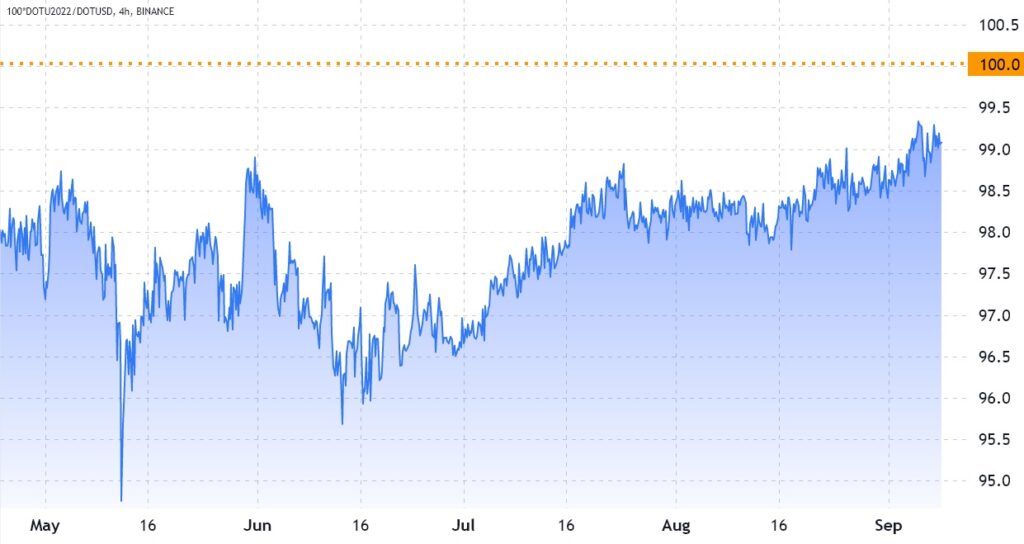Many traders regularly express some fairly serious misconceptions about trading crypto futures, especially on derivatives exchanges outside of the traditional financial sector. The most common mistakes relate to the price separation of the futures market, fees, and the impact of liquidation on derivatives.
Let’s take a look at some simple mistakes that traders should avoid when trading futures.
Differences Between Derivatives and Spot Trading: Pricing and Trading
Currently, the open interest (OI) of crypto futures contracts exceeds $25 billion, and both retail traders and experienced fund managers use this instrument to leverage their crypto positions.
Futures and other derivatives are often used to reduce risk or increase exposure, but that does not equate to degenerate gambling, despite the common interpretation that it is.
Some pricing and trading differences are often overlooked in derivatives contracts. Therefore, traders should at least consider these differences when venturing into the futures market. Even derivatives investors who are proficient in traditional assets are prone to making mistakes, so it is important to understand the existing peculiarities before using leverage.
Most crypto trading services do not use US dollars, even if they display USD quotes. This is a big secret that is not widely known and is one of the pitfalls that derivatives traders face, causing additional risks and inaccuracies when trading or analyzing the futures market.
The pressing issue is the lack of transparency, so customers do not really know whether contracts are priced in stablecoins or not. However, this is not the biggest concern, as there is always an intermediary risk when using centralized exchanges.
Discounted Futures Sometimes Come With Surprises
On September 9, ETH futures expiring on December 30 were trading at $22, or 1.3% lower than spot prices on exchanges like Coinbase and Kraken. The difference is due to expectations of a coin fork during the Ethereum Merge. Futures buyers will not be awarded any of the potential free coins that ETH holders would have received.
Airdrops can also cause futures prices to fall because futures holders will not receive the rewards, but that is not the only case of price divergence as each exchange has its own pricing mechanism and risks. For example, quarterly DOT futures on Binance and OKX are trading at a discount to the spot price of DOT.

Note how futures traded at a discount of 1.5% to 4% between May and August. Such backwardation suggests a lack of demand from leveraged buyers. However, given the long-term trend and the fact that DOT rallied 40% from July 26 to August 12, external factors are likely to be the main culprit.
Futures prices are gradually decoupled from spot exchanges, so traders must adjust their targets and participation levels whenever they use the market on a quarterly basis.
Higher fees and price separation
The core benefit of futures is leverage, or the ability to trade larger amounts than the initial deposit (margin or deposit).
For example, an investor deposits $100 and buys (Longs) $2,000 worth of BTC futures using 20x leverage.
While derivatives fees are typically smaller than spot fees, a hypothetical 0.05% fee will apply for a $2,000 trade. Therefore, entering and exiting a position in one go will cost $4, which is equivalent to 4% of the initial deposit. It may not sound like much, but such a fee will be a burden if turnover increases.
Even if traders understand the costs and benefits of using futures, there is another unforeseeable factor that often only appears in volatile market conditions. The separation between derivatives and conventional spot exchanges is also due to liquidation.
When a trader’s collateral is insufficient to cover the risk, the derivatives exchange has a built-in mechanism to close the position. This liquidation mechanism triggers aggressive price action and a consequent divergence from the index price.
While these deviations will not cause additional liquidations, uninformed investors may react to price movements that only occur in derivatives contracts. To be clear, derivatives exchanges rely on external pricing sources, often from regular spot markets, to calculate the reference index price.
There is nothing wrong with these unconventional processes, but all traders should consider their implications before using leverage. It is important to evaluate the price divergence, higher fees, and liquidation implications when trading in the futures market.

